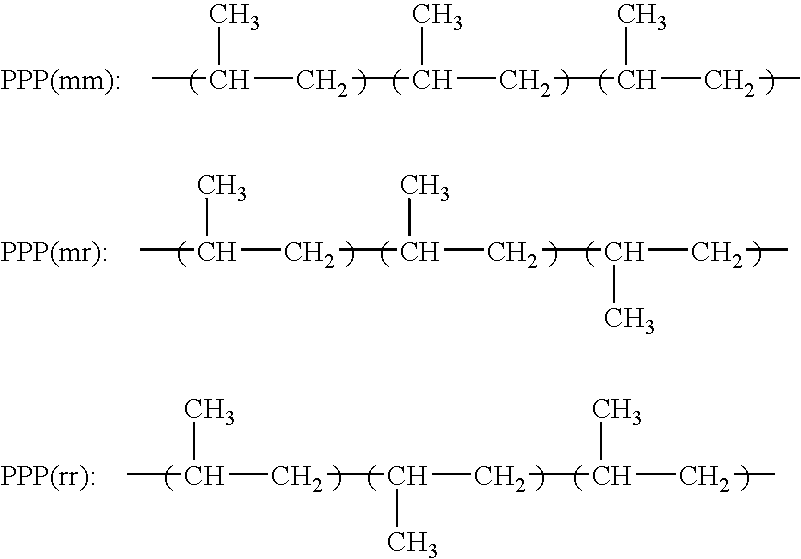Plasticized polyolefin compositions
a polyolefin and composition technology, applied in the field of soft polyolefin compositions, can solve the problems of high hardness and stiffness, rich polyolefins, unsuitable applications requiring a soft touch, etc., and achieve the effect of improving thermal resistance, toughness and/or elasticity, and softness
- Summary
- Abstract
- Description
- Claims
- Application Information
AI Technical Summary
Benefits of technology
Problems solved by technology
Method used
Image
Examples
examples
[0348] The present invention, while not meant to be limiting by, may be better understood by reference to the following examples and tables. Polymers and NFP's used in these examples are described in Tables 1 and 2.
Sample Preparation Methods
[0349] Samples were prepared by blending the desired composition, followed by compression molding or injection molding.
Blending
[0350] The components of the present invention were blended using a Brabender. The procedure involved mixing polymer pellets with the plasticizer in a heated C. W. Brabender Instruments Plasticorder to achieve a homogeneous melt at the desired plasticizer concentration. The Brabender was equipped with a Prep-Mixer head (approximately 200 cm3 volume) and roller blades. The operating temperature was above the melting point of the polymer, typically in the range of 180 to 200° C. Polymer was first melted in the Brabender at 60 RPM. Then, while mixing, the plasticizer was added slowly to prevent pooling in the melted po...
examples 1-16
[0353] Compression molded-part properties of plasticized propylene plastomer 1 and 2 are shown Tables 3, 4 and 5.
examples 16-61
[0354] Compression molded-part properties of compositions consisting of a polypropylene (HPP, mPP or ICP), a propylene plastomer, and plasticizer are shown in Tables 6, 7, 8, 9 and 10.
[0355] The three-component composition brings great flexibility in designing a final product. As illustrated in Tables 7 to 10, by varying compositions, blends can be formulated with various values of tensile strength, stiffness, upper service temperature and tension set while maintaining the same hardness. Combination of properties can be chosen to meet specific end-use requirements.
PUM
| Property | Measurement | Unit |
|---|---|---|
| pour point | aaaaa | aaaaa |
| melting point | aaaaa | aaaaa |
| viscosity index | aaaaa | aaaaa |
Abstract
Description
Claims
Application Information
 Login to View More
Login to View More - R&D
- Intellectual Property
- Life Sciences
- Materials
- Tech Scout
- Unparalleled Data Quality
- Higher Quality Content
- 60% Fewer Hallucinations
Browse by: Latest US Patents, China's latest patents, Technical Efficacy Thesaurus, Application Domain, Technology Topic, Popular Technical Reports.
© 2025 PatSnap. All rights reserved.Legal|Privacy policy|Modern Slavery Act Transparency Statement|Sitemap|About US| Contact US: help@patsnap.com



